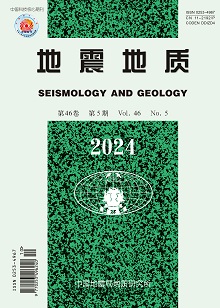基于航拍的“动变结构”地形点云获取精度分析
Q3 Earth and Planetary Sciences
引用次数: 11
摘要
在整个地球科学研究中,获取高质量数字地形数据的需求是显而易见的。这些数据的使用提高了地球科学的研究水平。机载和地面光探测和测距(Li DAR)是目前产生此类数据的最流行的技术,但是这些基于激光的技术的高成本和复杂的后处理限制了它们的可用性。在过去的几年里,一种新的立体摄影测量制图方法被称为运动构造(Sf M),该方法使用特征匹配算法从多个视点的重叠照片中重建三维数字地形。Sf M只需要一系列重叠的图像,对相机的位置、方向和镜头参数没有特殊要求,可以使用Sf M平台采集的图像快速生成高质量的3D数字地形。本文总结了Sf - M的基本原理和工作流程,表明Sf - M与Li - DAR相比是一种低成本、高效的地球科学应用工具。我们使用在1000米高度上收集的一系列重叠约70%的数字航空照片,生成了一个点密度为25的纹理(彩色)Sf M点云。5 / m2。如此高密度的点云使我们能够生成网格大小为0的DEM。2米。与Li DAR点云相比,统计分析表明:3%的Li DAR点垂直偏离封闭的Sf M点0。1米和88米。3%乘以0。2米。不同地形的Sf - M精度不同。Sf - M精度在低倾角和平缓地形上比在陡峭地形上更高。考虑到相对垂直误差为0。在Li DAR数据中,Sf m具有比Li DAR更高的测量精度。本文章由计算机程序翻译,如有差异,请以英文原文为准。
ACCURACY ANALYSIS OF TERRAIN POINT CLOUD ACQUIRED BY “STRUCTURE FROM MOTION”USING AERIAL PHOTOS
The need to acquire high-quality digital topographic data is evident throughout geoscience research. The use of these data elevates the research level of geosciences. Airborne and terrestrial light detection and ranging( Li DAR) are currently the most prevalent techniques for generating such data,but the high costs and complex post processing of these laser-based techniques restrict their availability. In the past few years, a new stereoscopic photogrammetry mapping method called Structure from Motion( Sf M) has been applied in geoscience,in which the 3D digital topography is reconstructed using feature matching algorithms from overlapping photographs of multiple viewpoints.Sf M only needs a series of overlapping images with no special requirements about the camera positions,orientations and lens parameters,making it possible to use images collected from an affordable Sf M platform to rapidly generate high-quality 3D digital topography. This paper summarizes the basic principles and the Sf M workflow,and shows that Sf M is a low-cost,effective tool for geoscience applications compared to Li DAR. We use a series of digital aerial photos with ~ 70%overlap collected at one-thousand-meter height to produce a textured( color) Sf M point cloud with point density of 25. 5 / m2. Such a high density point cloud allows us to generate a DEM with grid size of0. 2m. Compared with Li DAR point cloud,statistical analysis shows that 58. 3% of Li DAR points deviate vertically from the closed Sf M point by 0. 1m and 88. 3% by 0. 2m. There is different Sf M accuracy in different landforms. The Sf M accuracy is higher in low dips and subdued landforms than in steep landforms. In consideration of relative vertical error of 0. 12 m in Li DAR data,Sf M has a higher measuring accuracy compared with Li DAR.
求助全文
通过发布文献求助,成功后即可免费获取论文全文。
去求助
来源期刊

地震地质
Earth and Planetary Sciences-Geology
CiteScore
2.10
自引率
0.00%
发文量
3162
期刊介绍:
SEISMOLOGY AND GEOLOGY focuses on the latest research results in active tectonics, neotectonics, internal geophysics, tectonophysics, geodynamics, geochemistry, earthquake prediction, new chronology, engineering earthquakes, volcanology, and mitigation of geological disasters. Main Columns: Research Papers, Scientific Newsletters, Application of New Technology, Topical Reviews, Academic Controversies, SEISMOLOGY AND GEOLOGY has been published in China Science Citation Database (CSCD), China Periodicals Network, China Scientific and Technical Papers Statistical Source Database (CSTPCD), China Core Journals (Selection) Database, Chinese Scientific and Technical Journals Excellence Database, Abstracts Magazine, and China Science and Technology Journal of Excellence Database. Database, AJ of VINITI [Russia], Cambridge Scientific Abstracts [USA], Japan Science and Technology Society (Chinese Literature), scopus [Netherlands], Ulrich's Guide to Periodicals [USA], and other 18 famous domestic and foreign retrieval systems.
 求助内容:
求助内容: 应助结果提醒方式:
应助结果提醒方式:


